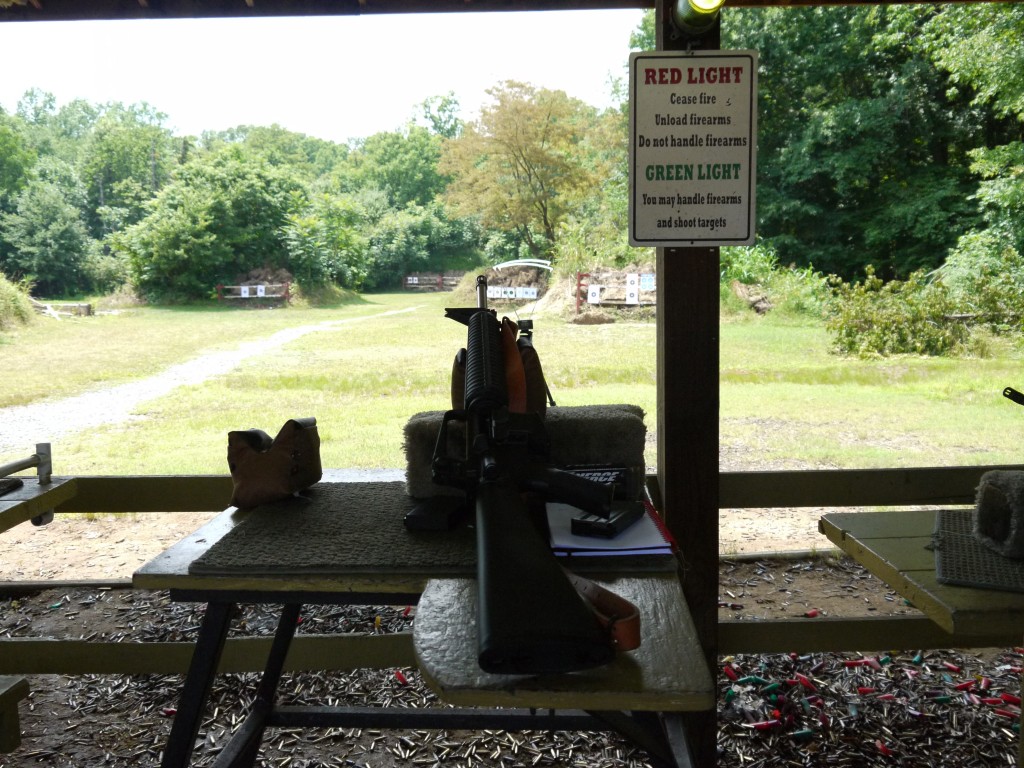 Here at TTAG we take it upon ourselves to spend inordinate amounts of time on the range in order to figure out what’s “the best” out there so that you, our beloved readers, don’t spend your money on utter crap. Today we look at three brands of .223 Remington ammunition: PDX-1, Pierce, and American Eagle . . .
Here at TTAG we take it upon ourselves to spend inordinate amounts of time on the range in order to figure out what’s “the best” out there so that you, our beloved readers, don’t spend your money on utter crap. Today we look at three brands of .223 Remington ammunition: PDX-1, Pierce, and American Eagle . . .
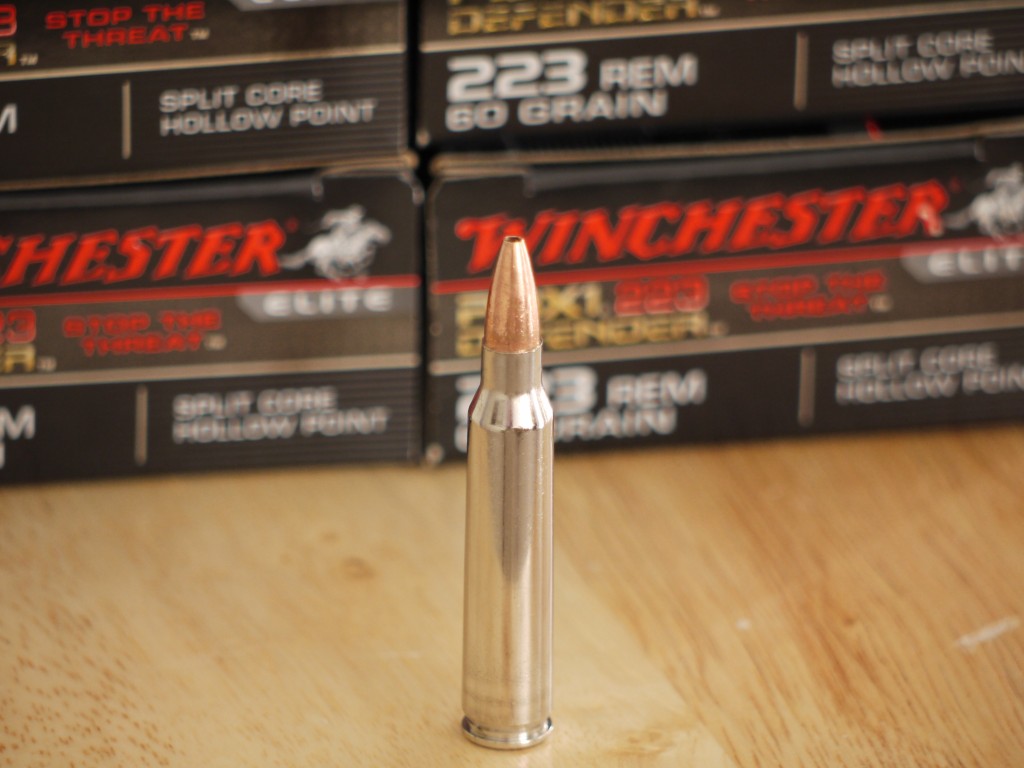 Winchester’s PDX-1 is a 60 grain .223 Rem snack for your AR that we took a peek at a few days ago. It’s not designed to be a “match grade” offering, but is the expected accuracy “head shot” or “center of mass” reliable?
Winchester’s PDX-1 is a 60 grain .223 Rem snack for your AR that we took a peek at a few days ago. It’s not designed to be a “match grade” offering, but is the expected accuracy “head shot” or “center of mass” reliable?
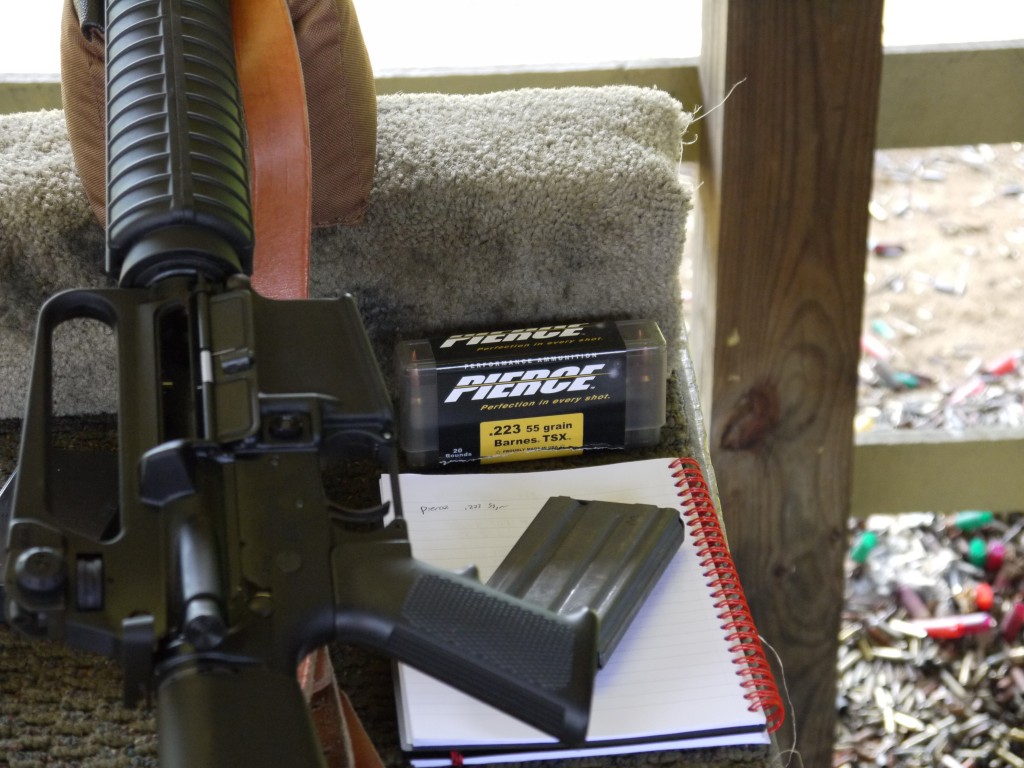 I ran into the guys from Pierce ammunition at the NRA Convention in Pittsburgh, PA. They made a bold claim: that their ammunition is the best out there. Naturally we couldn’t take them at their word, so they send out a box of ammunition for some testing and evaluation. And I must say, the box was very nice. But how did the ammunition stack up against the other “match grade” offerings?
I ran into the guys from Pierce ammunition at the NRA Convention in Pittsburgh, PA. They made a bold claim: that their ammunition is the best out there. Naturally we couldn’t take them at their word, so they send out a box of ammunition for some testing and evaluation. And I must say, the box was very nice. But how did the ammunition stack up against the other “match grade” offerings?
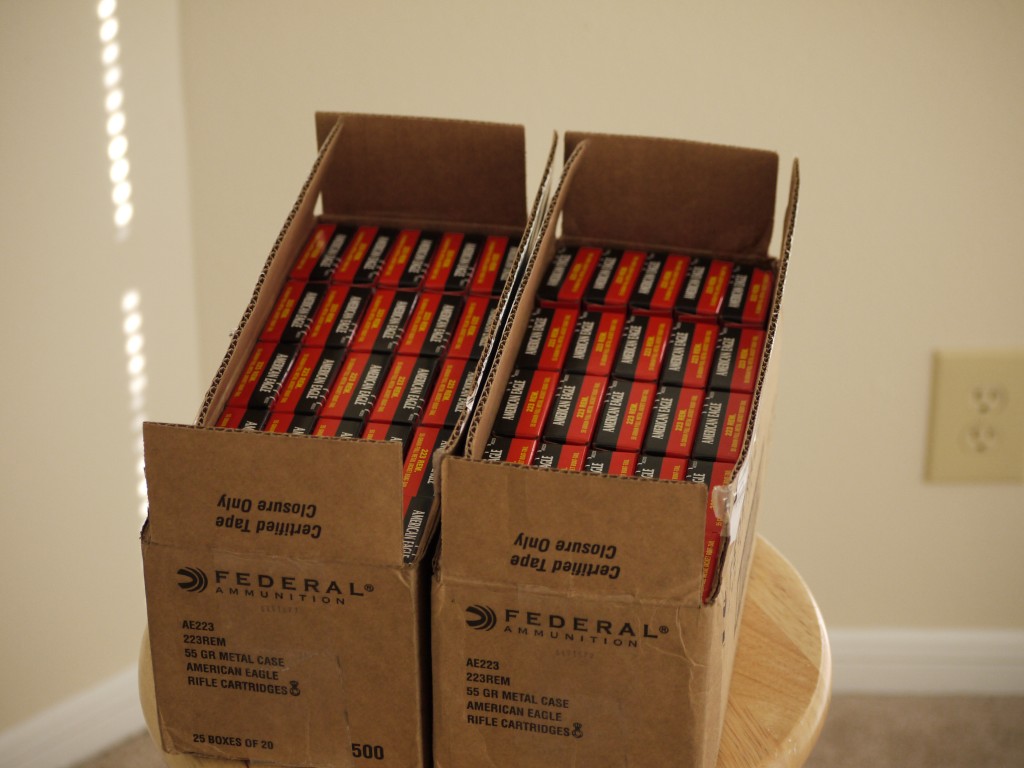 American Eagle is one of the favored brands for those ordering mass quantities of ammunition. It’s cheap, reliable, and brass cased. Which makes sense that this (pictured) 1,000 rounds of ammunition showed up at my door this week. But is it consistent enough to be relied on in a competition?
American Eagle is one of the favored brands for those ordering mass quantities of ammunition. It’s cheap, reliable, and brass cased. Which makes sense that this (pictured) 1,000 rounds of ammunition showed up at my door this week. But is it consistent enough to be relied on in a competition?
Inquiring minds need to know, and thankfully I have the answers. With special thanks to the Clark Brothers in Warrenton, V.A. for providing a range while our usual test facility is under repair (I swear I didn’t break it this time), I was able to get some good chronograph readings on everything here. The procedure was set out the first time we did this, and the test rifle remains the trusty ArmaLite M-15 A2 National Match rifle.
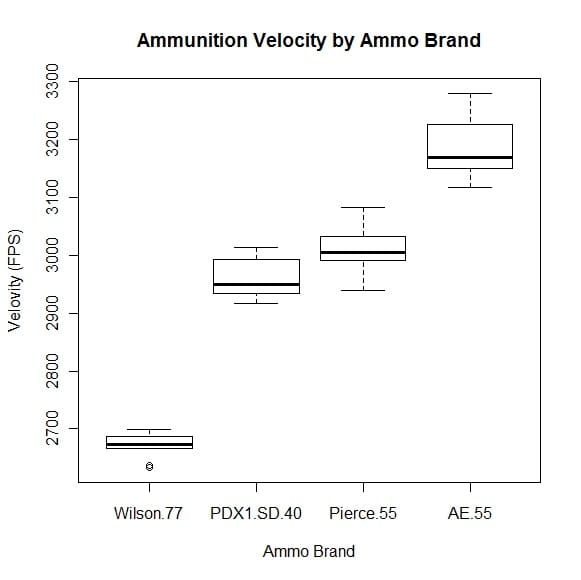 Ah boxplots, my best friends. As usual, we include the reigning champion in terms of consistency (Wilson Combat 77gr) for comparison. As you can see all three ammunition brands were much faster than the Wilson Combat, but their bullets also weighed almost half as much. This boxplot rarely tells us all the juicy details until we normalize the data, so let’s go ahead and do that.
Ah boxplots, my best friends. As usual, we include the reigning champion in terms of consistency (Wilson Combat 77gr) for comparison. As you can see all three ammunition brands were much faster than the Wilson Combat, but their bullets also weighed almost half as much. This boxplot rarely tells us all the juicy details until we normalize the data, so let’s go ahead and do that.
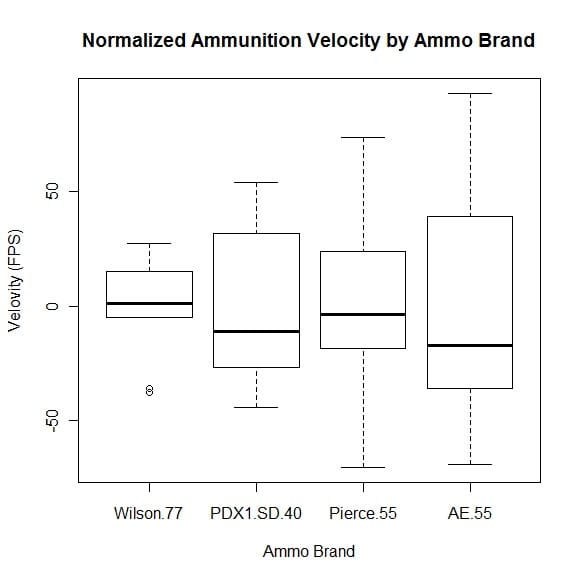 The normalization scheme for you math nerds is simply (velocity-average[velocity]), which puts the mean exactly at zero. The rest I think you can figure out for yourselves (smaller = better consistency).
The normalization scheme for you math nerds is simply (velocity-average[velocity]), which puts the mean exactly at zero. The rest I think you can figure out for yourselves (smaller = better consistency).
Let’s see where these new additions stack up in terms of the other brands we’ve tested so far.
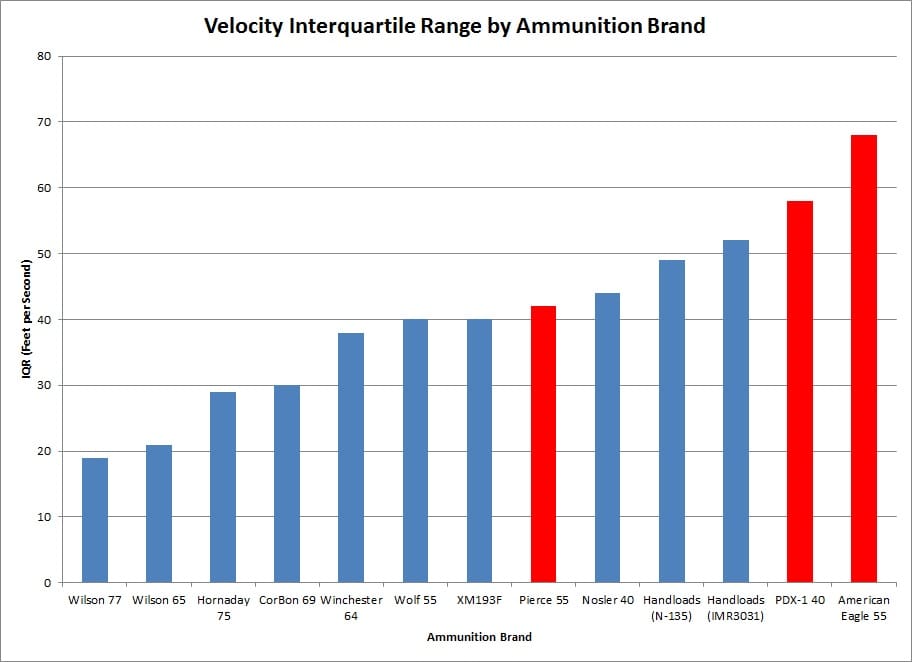 According to our testing, none of the ammunition we tried is any better than Wolf (the ammo everyone loves to hate). Pierce clocked in around the middle of the pack, and the PDX-1 and American Eagle were less consistent than my handloads. I wasn’t sure that was even possible, but it’s awfully hard to argue against cold hard facts.
According to our testing, none of the ammunition we tried is any better than Wolf (the ammo everyone loves to hate). Pierce clocked in around the middle of the pack, and the PDX-1 and American Eagle were less consistent than my handloads. I wasn’t sure that was even possible, but it’s awfully hard to argue against cold hard facts.
Is this inconsistency enough to make you miss a headshot at 10 yards? Probably not. But at 600 yards you can bet that it starts becoming a major factor. Join us next time as we continue our search for the most consistent ammunition in the world.
| Brand and Weight | Caliber | IQR | $/round |
| Wilson Combat 77gr Sierra HPBT Match |
.223 Rem | 19 | $1.52 |
| Wilson Combat 65gr Sierra SP BT |
.223 Rem | 21 | $1.52 |
| Hornady 75gr BTHP Match |
.223 Rem | 29 | $0.79 |
| CorBon 69gr HPBT |
.223 Rem | 30 | $1.18 |
| Winchester 64gr “Power Point” SP |
.223 Rem | 38 | $0.82 |
| Wolf 55gr FMJ |
.223 Rem | 40 | $0.21 |
| Federal XM193F 55gr FMJ |
.223 Rem | 40 | $0.32 |
| Pierce 55gr HP-BT |
.223 Rem | 42 | $?.?? |
| Nosler Varmint 40gr Ballistic Tip |
.223 Rem | 44 | $0.86 |
| Handloads – 20.8gr N-135 75gr Hornady HPBT Match |
.223 Rem | 49 | $?.?? |
| Handloads – 21gr IMR 3031 75gr Hornady HPBT Match |
.223 Rem | 52 | $?.?? |
| Winchester PDX-1 60gr SC-HP |
.223 Rem | 58 | $1.45 |
| American Eagle 55gr FMJ-BT |
.223 Rem | 68 | $0.30 |
Oh, and here’s the latest .308 chart too.
| Brand and Weight | Caliber | IQR | $/round |
| Hornady Superformance Match 150gr SST |
.308 Win | 26 | $1.21 |
| SetPoint – 44gr Varget 150gr Hornady FMJ BT |
.308 Win | 52 | $1.74 |
| Prvi Partizan 150gr FMJ |
.308 Win | 54 | $0.82 |




Nick I have a question about the relationship between velocity spread and accuracy, and question whether this variance is necessarily the end-all of accuracy or quality, which your study seems to imply.
Isn’t it more appropriate to feed this data into a ballistics calculator for each given round, taking into account the bc of the bullet? Isn’t it possible that certain bullets over certain velocity ranges are less susceptible to printing a wider group than others? Specifically I’m thinking that a 100 fps. variance for a round going 3000 fps at the muzzle is going to drop less than a round going 2000 fps at the muzzle, because it has less time to drop before it hits the target.
I guess I’m thinking that a faster round can get away with more variance than a slower round with better variance and still sprint the same group size…and maybe variance alone should not dictate ammo purchases.
But I was never so good at physics and math…
I put a lot of thought into that very question before I started down this road.
The biggest factor in accuracy is the shooter. While I’m getting one ragged hole out of my .22lr rifle at 50 yards, my friend who I brought shooting for the first time a week ago was doing about minute of pie plate at best. In doing any scientifically acceptable test (with repeatable results) that factor needs to be removed.
Once you remove the shooter from the equation (using a sled or rest of some sort) any resulting inconsistency is probably going to be a result of the firearm and its condition. There’s a major difference in grouping between my SIG P226 and my friend’s X-Five, specifically that his is golf ball sized while mine is soft ball sized. That has to do with how much wear the barrel has seen and how tight the tolerances were to begin with, so we had to control for the firearm as well.
Because the grouping on paper isn’t always repeatable and comparable between calibers, what we’re left with is velocity. By using the interquartile range of the velocity we remove as many factors as possible from the equation, and what we’re left with is how accurate the ammunition itself actually is. Not the shooter, and not the rifle.
Velocity IQR is a perfect metric to compare ammunition. It’s fine enough to distinguish between various high-end ammunition brands, and is an observed measurement instead of a calculated one. If we were to substitute group size at 100 yards, all that would be is plugging the velocities we already have into a computer and having it spit out the answer.
Group size may make more sense intuitively, but with velocity we already have a metric that perfectly describes the variability in the ammunition in a solid and repeatable experiment.
That said, the “top” round isn’t necessarily the top round for what you want to do. Ammunition choice is a trade off, between price and consistency, and between weight and velocity. Not every barrel can stabilize 55gr or 75gr properly, so when reading this chart what you should be looking for is which ammunition of the weight that you want is the most consistent.
I agree, comparing 55gr to 75gr is almost apples and oranges. But within 55gr and 75gr there’s some variability, and that’s where this chart can really shine.
I hope that helps…
Nick,
You make a good point, but for example, looking at your graph, although Wilson has a low spread, it also has a low average velocity. That AE.55 has a wide spread, but it is also pushing the fastest in the graph. Maybe it is more difficult to keep velocity in a relatively narrow range the higher the average velocity gets? Put another way, maybe it is easier to manufacture low velocity rounds that have consistent velocity than it is high velocity rounds (due to the presumably higher pressures, etc.). Does Wilson make a 3200fps round? Does AE make a 2700?
I also suspect, that absolute differences in velocity from the average may also be less relevant to accuracy as average velocity goes up, not just in a calculator, but in practice in a given rifle that shoots the ammo well.
Based on your data, is there indeed a correlation between absolute velocity spreads and the average velocity?
The one area I will agree with you is that for a given bullet weight and average velocity, the manufacturer with the lower variance is going to shoot better in most rifles, all else equal.
I was asking myself that same question yesterday, about a correlation between velocity and consistency. And right now the answer is a definitive “I have no idea.” There’s not enough data to support that conclusion, but it’s a hypothesis that we’ll be looking at going forwards.
Is the Wolf ammunition dirtier? More corrosive? Socially unacceptable? Why is it so much cheaper than all other .223 rounds/
It’s russian steel cased ammo that can get pretty corrosive. Likely dirtier too. I personally wouldn’t run it though a gun that wasn’t tough and easy to clean. Nick can probably explain more.
Wolf actually isn’t corrosive. The biggest issue people have is that the cases are made of steel, which wears out the parts faster (or so the idea goes).
And Wolf usually yields poor accuracy, for reasons I have not quite figured out.
Another problem with the Russian made ammo is that, in addition to the cases being made of steel, the bullet itself is jacketed in steel. It’s a soft steel, but steel, nonetheless, and it will most assuredly wear your rifling down faster than standard copper jacketed rounds. It’s even worse for semi auto as opposed to bolt-action because you may have the addition of heat, depending on how rapidly you fire.
I like American Eagle 55gr FMJ and 62gr FMJ ammo, but I won’t touch the Russian made stuff because of the steel jacket.
Socially acceptable: Many ranges and clubs that recycle their brass don’t like them because it pisses off the recyclers who buy the brass to melt down. I don’t like it because it lessens the supply of once-fired range brass available to cheapos like me who reload!
Oh, sorry…to your original question, my understanding is that steel is a much cheaper metal than brass at the moment, with little or no scrap value.
As I am not an AR (or any kind of rifle) guy I have to ask:
What parts come in contact with the case on an AR which would be worn by a steel case?
Is there an extractor?
A feed ramp?
A little guy with Palmolive™ soft hands who loads the round and pushes the empty case out of the chamber?
Parts that are touched by the round include:
– Bolt face
– Extractor
– Ejector
– Chamber
– Feed ramp
The one that experiences the most wear would be the extractor, as it needs to ride over and clamp onto the rim every time a round is loaded. It was, however, originally intended to be field serviceable so in theory it should be easy and cheap to replace.
I have used Wolf in my only 5.56mm, my PLR 16, but usually I stick with American brass case-as I figure it was designed. Likewise, I usually only use steel case Wolf and brass case Brown Bear in my RPK, as I figure that it was designed with steel case in mind. The reason I avoid Brown Bear steel cases is that I’ve found them to be dirtier. I also avoid the lacquered steel cases-for the mess and sticking.
Nick,
I would be interested in seeing some tests across calibers in the same brand. I.e. if XYZ brand .223 is junk, does that also mean that their 9mm is also crap?
Nick,
Great review. I do remember meeting you at the NRA Show in Pittsburgh. Our offer still stands for you to come up to our facility and spend some time looking at how we develop, test and manufacture ammo. We’ve just added 4 projectile lines and are in the process of bringing a brass cartridge line into production.
A little more about Pierce Munitions: All of our measurement devices are calibrated to NIST traceable standards. We’ve performed Gage R&R studies on our measurement systems, manage all of our processes using SPC, and just spent close to a million dollars on an automated inspection system. We have an indoor ballistics test lab 50 feet from our loading equipment that was developed from FBI protocols. We’re also 300 feet from an outdoor range where we can perform accuracy tests. We continuously test ammunition as it’s produced to ensure lot-to-lot variability is minimized. We currently supply duty rounds to a number of tactical teams in law enforcement and the military, both domestically and abroad. Needless to say, we’re very proud of what we do and how far we’ve come in a relatively short time.
One thing about the review, and it’s already been pointed out; comparing a 55 grain round to a 77 grain round isn’t going to bear much usable information. I would have preferred using a 70 grain TSX which is better suited to the 1:8” twist of Armalite’s M15 A2 National Match Rifle. Moreover, the TSX bullets are not match grade rounds. They’re awesome hunting rounds, which we loaded primarily for bolt action rifles. For true match grade shooting however, the 69 or 80 grain Sierra Match Kings we make would provide you with a considerable increase in performance. Pierce is also expanding its in-house line of Valkyrie extreme performance solid projectile rounds to include a number of offerings for the .223/5.56x45mm NATO.
Keep up the good work!
Mike Garcia
Product Engineer
Pierce Munitions
I bought a box of Pierce Ammo at a local shop before the NRA show here in Pittsburgh and have been thouroughly satisfied with the quality and accuracy of the ammunition. Currently i have 17 rounds of .45 ACP loaded and ready for my daily carry. I shot a few of them at the range just to see how my gun liked them, and each one fed flawlessly with a very nice 2″ grouping at 15 yards. Great products are being made at Pierce, if you see it on the shelf give it a shot.
to Bruce W Krafft i refuse to shoot AE pistol ammo I had 2 squib loads in 4 boxes of new ammo, In a brand new M&P and hammering rounds out of any barrel isnt fun especially when you have only put 23 rounds through it, and a Factory loaded round squibs twice in the same afternoon, Ive never seen one before or scince, and ive bought brown bear RUAG and one other wierd euro brand that escapes me. they were dirty, but actually fired. But i got a FANTASTIC deal on a brand new bushmaster AR-15 xm e2s and 2500 rounds of 55gr AE fmjbt ammo ($1100) and it shoots 1.5 moa, and im sure it would do better if i had a better lighter trigger and the 16″ barrel isnt the best for tack driving at 300yds thats the farthest my usual range goes to, Ive shot the 55gr AE out to 750 but at that point hitting a man sized target in 10-15mph winds with a carbine length rifle and a factory trigger is hit and miss, (pun intended). But ive shot about 800rds of the AE 223 ammo and had no issues no jams to fte’s no ftf’s although that wouldnt be the ammo’s fault, and most importantly EVERY ROUND LEFT THE BARREL. so I wont shoot 9mm AE ammo but the .223 stuff is great, If i can get 1.5 moa at 300yds with it its perfect practice ammo, I have a 3lb trigger on the way so i should get better groups, the bushmaster is a great rifle but the trigger is waay to heavy and is as creepy as a guy in an old beat up van parked at the playground.
Comments are closed.